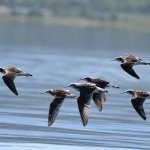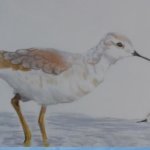By: Tifany Amatali and Arne Lesterhuis
The mudflats of coastal Suriname are considered amongst the most important wintering sites for shorebirds in South America. Fortunately, most of the coast is protected as Multiple Use Management areas. Howover, due to low technical capacity, management of these areas is challenging. In collaboration with the Anton de Kom University of Suriname, the Western Hemisphere Shorebird Reserve Network (WHSRN) is developing a future generation conservation leadership program that focuses on shorebird and coastal habitat conservation.
A pilot premaster course on shorebird and coastal habitat conservation was implemented in December 2019. Lectures for the course were provided virtually and in-person and were attended by 25 students representatives from five institutions. Building upon positive feedback, this premaster course was included in the annual University curriculum as part of the environmental sciences program.
One of the students in this program was Tifany Amatali, a 21-year-old resident and environmental management student at the Anton de Kom University of Suriname. Tifany was always fascinated by the beautiful vocalizations of birds. More recently, her interest has grown and she has found herself reading more about the behavior of different species. “Especially in the past few months I have made it a daily habit to read and learn about a species which I didn’t know before. For me, learning how birds interact with each other and the environment in many ways is mind blowing” says Tifany.
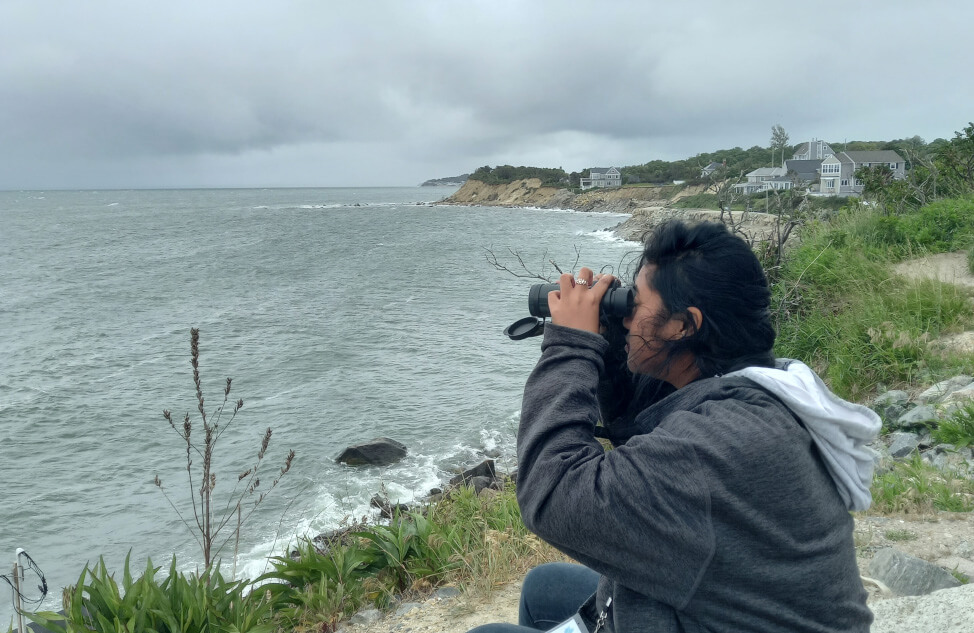
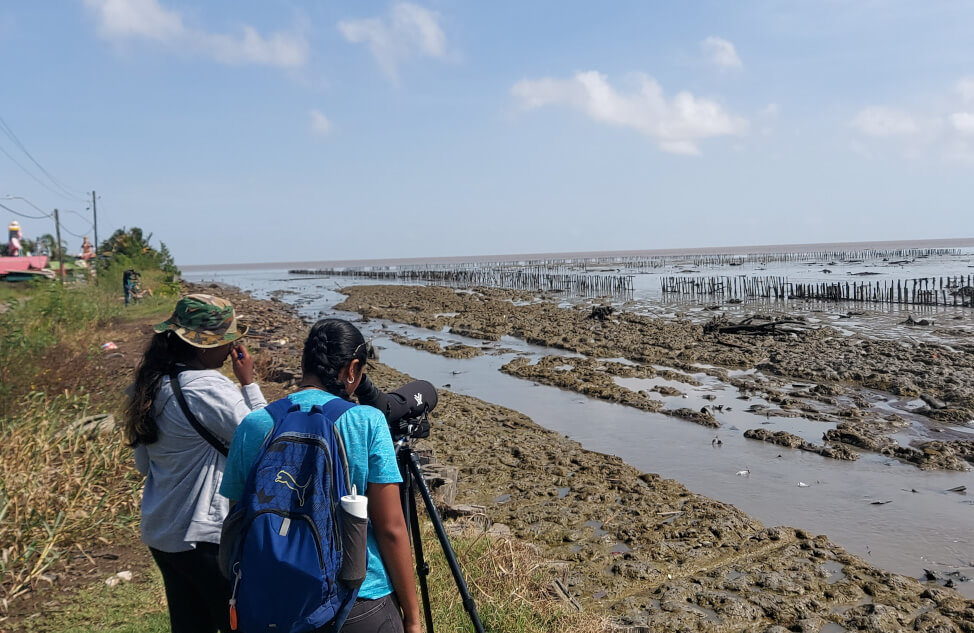
Left: Tifany watching birds at Manomet Point. Photo: Salvadora Morales. Right: Tifany counting shorebird at Weg naar Zee. Photo: Arne Lesterhuis.
Although Tifany always had a general interest in birds, a more specific interest for shorebirds started to grow during a mini-assignment that she had to carry out for the University. Tifany analazed available data of the Whimbrel and Least Sandpiper from Weg naar Zee, an important shorebird site near Paramaribo, Suriname´s capital city, and compared more recent numbers with data from the eighties. Tifany comments, “During this assignment I learned how to identify and count these two species at the site, which was more challenging than I initially thought it would be. During the field visits, I also realized how many shorebirds come to the coast of Suriname and how important Suriname is. After finalizing the assignment, I wanted to know more about these birds”.
In addition to working with the University, WHSRN also works with the Ministry of Land Policy and Forest Management on implementing management actions at Bigi Pan MUMA, one of three WHSRN sites in Suriname, located closest to the border of Guyana. Bigi Pan is a WHSRN Site of Hemispheric Importance due to the large number of shorebirds wintering along the coast. Being born and raised in Nieuw Nickerie, the city next to Bigi Pan, she remembers visiting the site a few times as a child. “I remember from those visits that Bigi Pan has a great diversity of birds. This is something I am proud of and often boast about when I talk about [home],” says Tifany.
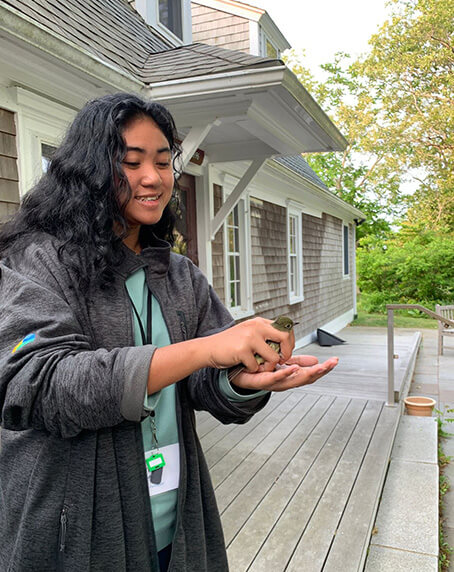
Tifany at the Banding Lab of Manomet. Photo: Salvadora Morales.
In Suriname, lack of opportunity and experiences is one of the greatest barriers that young professionals like Tifany face when beginning their careers. Especially regarding gaining skills required for bird research and monitoring. Manomet’s Ornitological Careers Institute (OCI) seeks to close this skill gap and invites students to their headquarters to participate in a diversity of workshops on bird identification, monitoring techniques, bird handling, and bird banding. Together with four other students and early career professionals, Tifany was invited to participate in the OCI of 2023. “I am constantly seeking opportunities to challenge myself and evolve both personally and professionally” says Tifany and continuing “before the OCI I did not have any experience with handling birds. I learned bird handling skills and how to collect banding data. Improving practical skills was one of many exciting things I did at Manomet.” During the OCI, all participants also exchanged their own expertise and views on what they envision to do in the future. “It was very motivating to learn about what they did in their countries and it also sparked a future ideas,” according to Tifany.
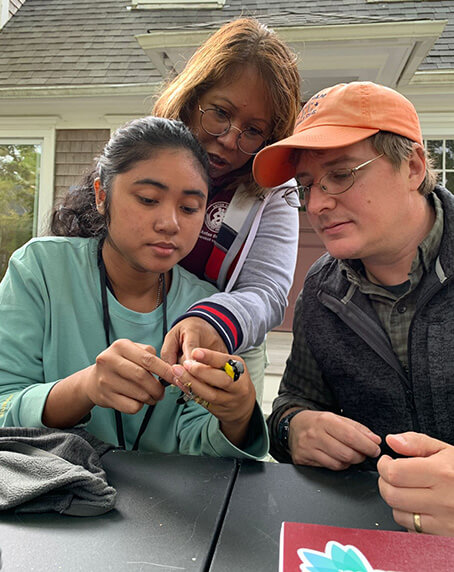
Tifany and Marie Djosetro (University of Suriname) learning bird handling skills from Evan Dalton (Manomet) during the OCI. Photo: Salvadora Morales.
The skills learned and the information exchanged with the other participants sparked ideas for Suriname. Tifany commented that the coast of Suriname has many shorebird sites, but currently at most of these sites no data is being collected. She thinks that there is a great opportunity to collect data not only at foraging sites but also at roosting areas like for example Braamspunt, which also lies close to Paramaribo. Such data can be used to estimate populations and improve and/or adapt the shorebird management action in Suriname. “In the future, I hope that we can work on shorebird banding in Suriname, which would allow research to be done about the links with other stopover sites. For this to be accomplished Suriname needs financial support for projects (for example for materials for bird banding) as well as more training of individuals,” says Tifany.
In the future, Tifany sees herself being part of the team that brings this to reality. There are still many gaps in information regarding shorebirds in Suriname that she hopes to be able to fill. “For now, I will try to learn more about data collection techniques in the hope that I will be able to collect and process accurate data in the future”.
Cover Photo: Tifany practicing shorebird Id skills at Weg naar Zee, Paramaribo. Photo: Arne Lesterhuis.





